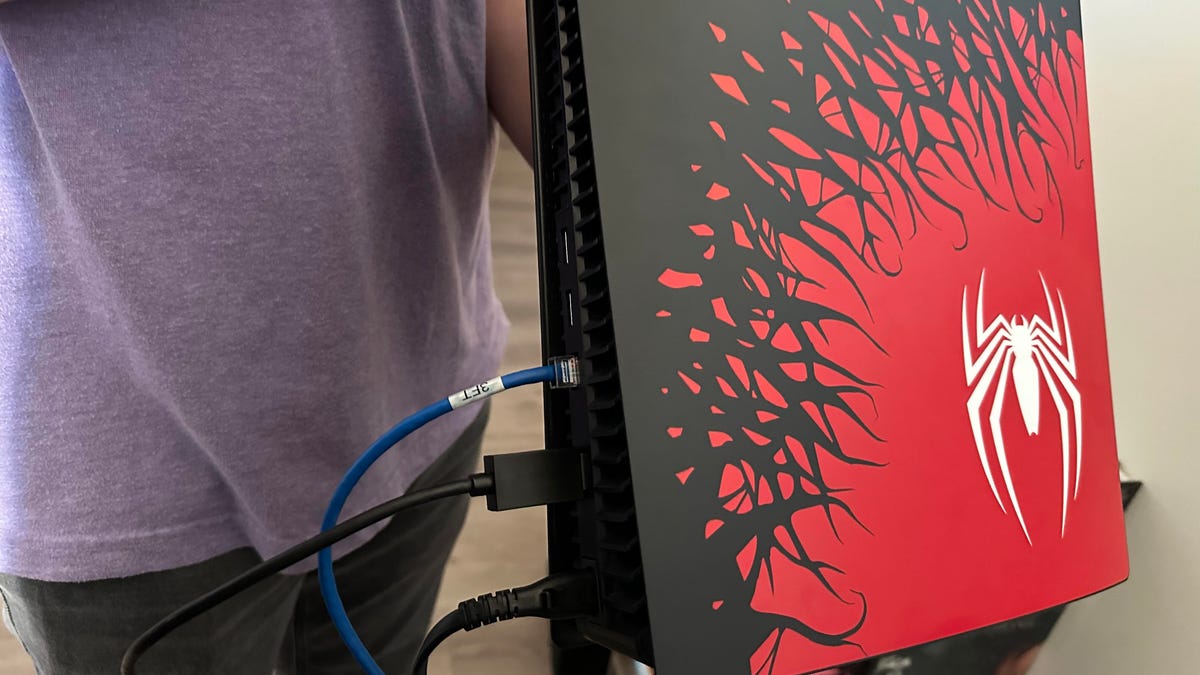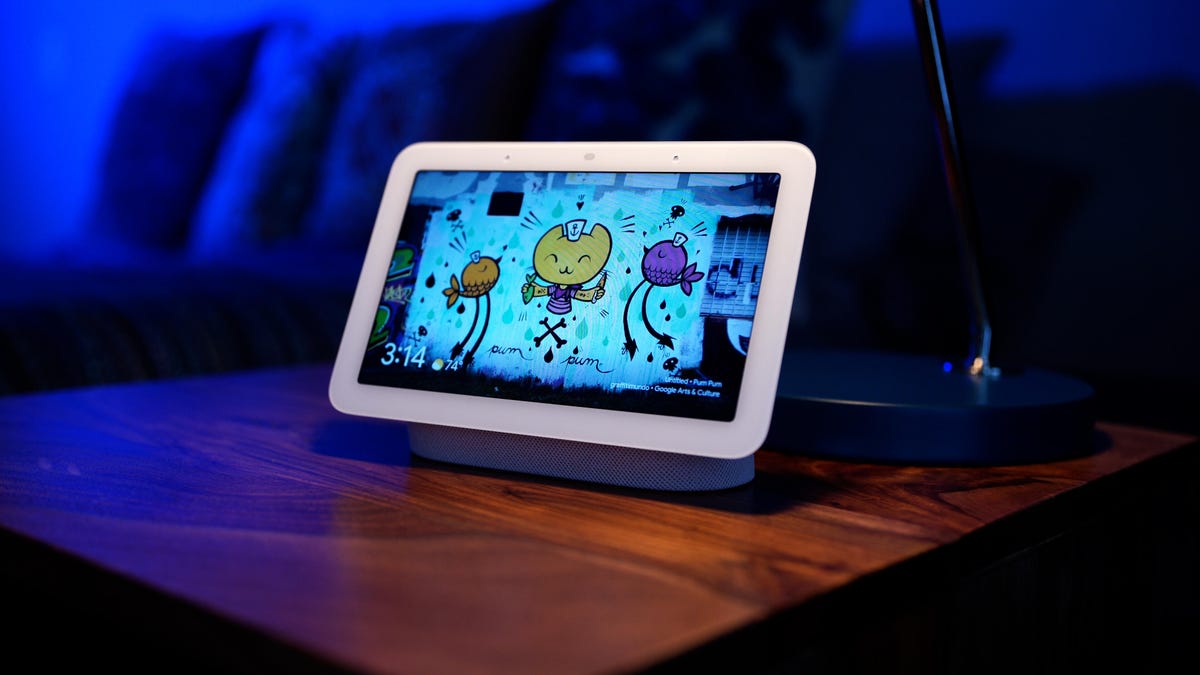What's the Difference Between Wi-Fi and Ethernet? What I Found When I Tested Them at Home

I’ll be honest: Before I joined CNET, I only cared about whether my Wi-Fi was strong or not. After I joined the broadband team and started writing about home internet every day, I realized I’d thrown the term Wi-Fi around without really understanding it. What is Wi-Fi exactly? Is it better than those ugly cables known as Ethernet?
The answer is subjective, depending on your specific broadband needs and setup. Knowing what internet speeds you need and what speeds you’re actually getting is vital to creating an optimized home internet network — and to finding the best internet provider for your household.
So, after covering broadband for CNET for over nine months, I finally decided to test Ethernet and Wi-Fi connections at home for myself. Here’s what I learned.
Read more: Home Wi-Fi issues? Here are four simple steps to boost Your Wi-Fi
My home internet experiment
First, let’s clarify: Wi-Fi is a way to wirelessly connect to the internet. Whether cooking in the kitchen or sitting on the couch, a Wi-Fi connection will get your devices online without plugging them into your modem or router. Ethernet is the opposite. It’s a wired connection that requires either coaxial or fiber-optic cables plugged directly into your router, which can be inconvenient but often results in a more reliable, faster internet connection.
Using Speedtest by Ookla, CNET’s pick for the best speed test, I tested this for myself by comparing my internet speed over Wi-Fi and Ethernet connections to see which was faster. (Ookla is owned by the same parent company as CNET, Ziff Davis.) You might be surprised at the difference; I certainly was.
Over Wi-Fi, I was receiving download speeds of around 126 megabits per second. With Ethernet, my download speed immediately shot up to 395Mbps — only 5Mbps away from what I’m actually paying for monthly.
I never noticed much lag when streaming with Wi-Fi, but using an Ethernet cable made a noticeable difference in streaming and gaming. Movies, shows and live television loaded much faster on Hulu, HBO Max and Netflix. To maximize response time, I decided to plug my Ethernet cable into my PlayStation 5 indefinitely.
Then I wondered, why was Ethernet faster than my Wi-Fi connection?
This is what it looks like when you connect a device to a router using Wi-Fi.
What is Wi-Fi?
Let’s explore some of the technicalities of Wi-Fi. In 1997, the Institute of Electrical and Electronics Engineers developed, released and patented the first version of Wi-Fi. Since that release, the Wi-Fi Alliance (which now holds the trademark for Wi-Fi) has developed evolved versions of Wi-Fi — including current-gen, Wi-Fi 7 — that offer stronger and faster connections.
Most routers will be equipped with Wi-Fi 6 or 6E and although the connection may be stronger the closer you are to the router, you should be able to access the internet wherever you are in your house.
Some areas of the house may create Wi-Fi “dead zones” with lagging speeds despite what you may be paying monthly. My CNET colleague Trisha Jandoc discovered this by experimenting to boost her gigabit speeds at home. Dead zones are often inevitable when it comes to Wi-Fi, as it’s impossible for frequency bands to reach every room of the home without some kind of inhibition.
It may help to purchase a Wi-Fi extender that broadcasts signals to every room, resulting in fewer dead zones and a more reliable internet connection throughout the house. The TP-Link RE605X is CNET’s top pick for the best Wi-Fi extender due to its affordability, ability to support Wi-Fi 6 speeds and easy-to-use features.
Ethernet cables connected to a router.
What is Ethernet?
Before there was Wi-Fi, there was Ethernet. Ethernet existed as the primary way to link devices together and connect to the internet, through cables that plug directly into your router.
A wired connection means you have to be near your equipment if you want to go online, but it is possible to wire your house with Ethernet cables, similar to cable wiring, although the procedure can be costly.
What is the future of Ethernet?
This graphic conveys that artificial intelligence has the potential to push Ethernet speeds to reach 800Gbps and beyond.
Over the past decade, Ethernet has undergone many changes, and even more so with the increase of artificial intelligence.
According to the Ethernet Alliance, due to the rise and demands of AI, Ethernet connection speeds are evolving and are projected to increase to 800 gigabits or (8,000 megabits per second) and beyond. As it becomes easier to incorporate Ethernet cables into your work or gaming set-up, it’s a no-brainer that customers want to ensure they’re getting the fastest speeds in those spaces consuming more bandwidth than others.
Comparing Wi-Fi and Ethernet
Wi-Fi and Ethernet have advantages and disadvantages depending on your personal needs. Here’s what you need to know.
Wi-Fi
Pros
- Convenience
- Mobility
- Affordability
Cons
- Congestion
- Limited range
- Security risks
Ethernet
Pros
- Reliability
- Faster speeds
- Secure connections
Cons
- Limited mobility
- Limited number of connected devices
- Cost
Which is cheaper?
It might seem like the cost of Wi-Fi and Ethernet would be similar — since you’re paying for the service, not the mode of internet connection — but Wi-Fi is actually significantly cheaper than Ethernet. That mostly comes down to installation costs and the complexity of setting your home or office up for a wired Ethernet connection. For instance, installing an Ethernet setup often requires specific ethernet ports, costing anywhere between $100 to $200. On the flip side, Wi-Fi installation costs an average of $45 to $100. In addition, Wi-Fi can handle a lot more devices than regular Ethernet cables can. To make it worthwhile, you would have to install a switch box or Ethernet jacks around your house to connect multiple devices to the internet.
Which is faster?
Ethernet’s main advantage is speed. Since your device is connected directly to the router — compared to wirelessly through Wi-Fi — you can expect faster bandwidth, which is how much data you can transmit through an internet connection. According to WOW Internet, while Wi-Fi 6 technology can support speeds of up to 9,600Mbps, speeds usually average around 1,600Mbps, whereas an Ethernet connection can offer speeds of up to 10,000Mbps. These speeds seem really promising, but in reality, your household may not even need it. Openvault’s Q1 2024 report highlights that the average American household uses 567Mbps downstream and 31Mbps upstream. Gigabit speeds (1,000Mbps) should be plenty enough for your household. Plus, if you want multi-gig speeds with the latest Wi-Fi technology, you should make sure your router is compatible first.
Ethernet also boasts more consistent speeds since wired signals don’t fluctuate as easily as wireless ones do. You also won’t have to worry about latency issues or a lag in connection that sometimes occurs with local network congestion. Since lower latency improves online gaming, Ethernet provides a smoother experience for online gamers.
Which is safer?
One of Ethernet’s advantages over Wi-Fi: the connection is safer and more secure. Hackers can more easily intercept data transmitted through Wi-Fi, but if they want to hack you over Ethernet, they need to physically connect to the router.
Which is better overall?
We recommend using Wi-Fi due to its convenience and ability to be used anywhere. Using an Ethernet connection all the time is just not practical. Using Wi-Fi, you can access the internet from anywhere in your house without plugging into a router. Ethernet limits your mobility, which is unrealistic if you have several people connecting multiple devices.
Testing my internet speeds with an Ethernet cable did help me pinpoint the root cause of my slow connection. Based on the drastic difference between the Wi-Fi and Ethernet speed tests, I determined that my Wi-Fi connection was to blame for the slow service, not my ISP throttling my speed. By plugging Ethernet cables into my PlayStation 5, I can use faster speeds and lower latency for an optimized gaming experience.
I haven’t taken any steps yet to boost my Wi-Fi signals, but I might move my router to a more central area of my apartment or get an extender to help my speeds stay consistent. My former colleague Ry Crist looked into more ways to speed up your Wi-Fi, and you can bet I’ll be taking his advice.
What’s the bottom line?
Both Wi-Fi and Ethernet have their benefits when it comes to home broadband. Wi-Fi offers mobility and convenience, meaning you can access the internet anywhere in your home, while Ethernet provides faster and more secure connectivity.
Most of us will be better off with Wi-Fi because our homes and apartments are filled with smart devices. Ethernet is a great tool to increase responsiveness, especially for gamers who want less lag with online gaming.
Wi-Fi vs. Ethernet FAQs
Can I use both Wi-Fi and Ethernet?
Many households use Ethernet cables for certain devices, like gaming consoles or televisions, that are planted in one spot and need fast connectivity. Wi-Fi is the better option for mobile devices — that way, you can take your phone or tablet anywhere without having to plug it in.
What are the different types of Ethernet cables?
Ethernet cables can be coaxial, a twisted pair or fiber optic. Seven different Ethernet cables are available on the market: CAT5, CAT5E, CAT6, CAT6A, CAT7, CAT7A and CAT8. Each differs in purpose, cost and the distance they cover, so do your research before purchasing one for your home.
How do I set up an Ethernet connection?
Setting up an Ethernet connection is a pretty straightforward process. Most cables require you to plug one end into the router and the other into your device. You can access the internet once you change your adapter settings to the Ethernet connection.
Which is faster: Ethernet or Wi-Fi?
Ethernet offers faster speeds than Wi-Fi since your device will be directly connected to the router. Wi-Fi remains to be the more convenient option as you can use it anywhere in your home.
Source: CNET















